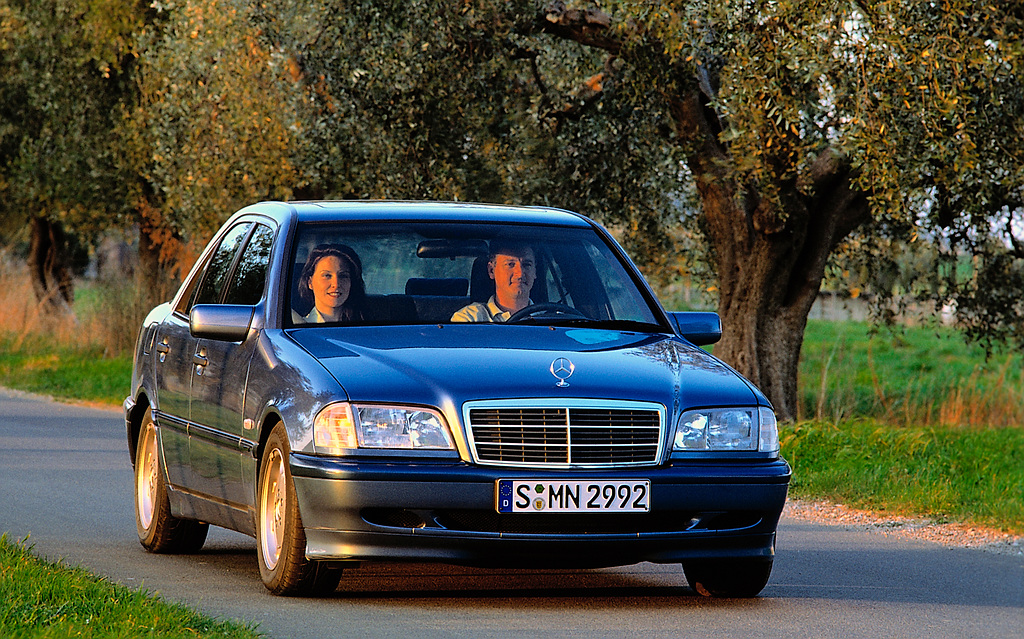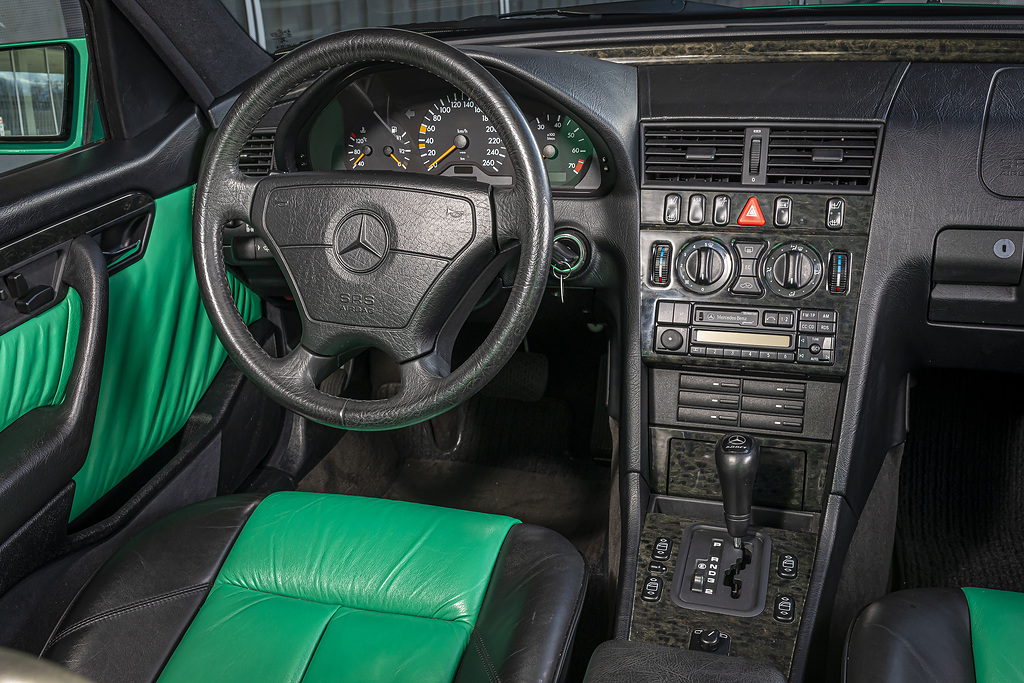Mercedes-Benz has always been a brand that evoked luxury, style, and performance, and the C-Class is just one of its cars that encapsulate all three aspects. Tracing its roots in 1993, the Mercedes C-Class began under the 202 series, which has proven itself to be a resounding success, with nearly 1.9 million units produced globally up until 2001.

Sleek and Timeless Design
The design of the 202 series C-Class was both sleek and timeless. It embodied a more practical and sportier character than its predecessors in order to appeal to the younger demographics of the market.
Mercedes’ 1999 to 2008 Head of Design Professor Peter Pfeiffer described it as something that “fitted naturally into the design idiom of the brand.” Compared to its predecessor, the Mercedes-Benz 190, the new range offered significantly more interior space.
With larger internal dimensions and a minimal increase in body size, the C-Class was designed to appeal to a broader public. Indeed, the design was instrumental in the product’s success.
Before the emergence of the GLC as the best-selling vehicle of the German automaker, the distinction belonged to the C-Class over the past few decades.
Safety and Resource Conservation
The engineers of the 202-series Mercedes C-Class placed great emphasis on ensuring the car’s safety. They implemented various features that enhance driver and passenger protection during frontal and rear-end collisions, as well as side-impact collisions.
The car’s side wall was constructed as a single piece and was designed to be exceptionally robust. Additionally, the doors were reinforced and there were large cross-members installed under the front seats, which served to transfer forces to the center tunnel and the unaffected side of the car. Likewise, the seats themselves were engineered to be rigid, so as to prevent them from collapsing during an impact.
Another factor that was considered during the development of the 202 series was resource conservation. The designers aimed to make at least 85% of the vehicle to be recyclable at the end of its lifespan.
Powerful and Fuel-Efficient Engines
The C-Class was launched with four petrol and three diesel models. The petrol engines possessed more torque and higher rated output than their predecessors, with significantly improved exhaust gas quality. The petrol units were populated by the C 180 with 122 hp, the C 200 with 136 hp, and the C220 with 150 hp.
Meanwhile, the C 36 AMG topped the range with 280 hp. The car was the first cooperation project with AMG and a particularly sporty version.
Among the diesel models, the C 200 Diesel with 75 hp, was the series’ entry-level model. This was followed by the C 220 Diesel with 95 hp and the C 250 Diesel with 113 hp.
At this point, Mercedes was the first automaker to integrate four-valve technology for diesel engines to bring about more power optimization while having lesser fuel consumption and lower emissions.
Suspension Focused on Comfort
The C-Class’ improved ride comfort and driving safety compared to its predecessor can be attributed to modern axle designs. The front axle features a double wishbone axle with two wishbones, while the rear axle is a multi-link axle with separate spring and shock absorber arrangements.
Final Thoughts on the 202 Series Mercedes C-Class
The 202 series C-Class is a car that truly embodied Mercedes-Benz’s commitment to luxury, style, and performance. From its sleek and timeless design to its emphasis on safety and resource conservation, the models under the range have set a new standard for compact executive cars.
With powerful and fuel-efficient engines, modern axle designs, and improved ride comfort, it’s no wonder that the C-Class became a runaway success with almost 1.9 million units produced. Today, the C-Class continues to be a symbol of automotive excellence and innovation, and its legacy lives on in the latest models from Mercedes, including its SUV offshoot, the GLC.









































